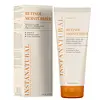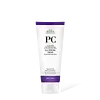What's inside
What's inside
 Key Ingredients
Key Ingredients

 Benefits
Benefits

 Concerns
Concerns

 Ingredients Side-by-side
Ingredients Side-by-side

Water
Skin ConditioningAloe Barbadensis Leaf Juice
Skin ConditioningDicaprylyl Ether
EmollientCarthamus Tinctorius Seed Oil
MaskingGlyceryl Stearate
EmollientCetyl Alcohol
EmollientStearic Acid
CleansingGlycerin
HumectantSodium Ascorbyl Phosphate
AntioxidantButyrospermum Parkii Butter
Skin ConditioningSodium Hyaluronate
HumectantRetinol
Skin ConditioningLimnanthes Alba Seed Oil
Skin ConditioningHesperidin
EmollientRosmarinus Officinalis Leaf Extract
AntimicrobialCentella Asiatica Extract
CleansingHibiscus Rosa-Sinensis Flower Extract
HumectantPanthenol
Skin ConditioningCamellia Sinensis Leaf Extract
AntimicrobialGeranium Maculatum Extract
TonicSalix Alba Bark Extract
AstringentGlycine Soja Oil
EmollientTocopherol
AntioxidantXanthan Gum
EmulsifyingLeuconostoc/Radish Root Ferment Filtrate
AntimicrobialSodium Hydroxide
BufferingHydroxyacetophenone
AntioxidantPropanediol
SolventPhenethyl Alcohol
MaskingPentylene Glycol
Skin ConditioningCitric Acid
BufferingWater, Aloe Barbadensis Leaf Juice, Dicaprylyl Ether, Carthamus Tinctorius Seed Oil, Glyceryl Stearate, Cetyl Alcohol, Stearic Acid, Glycerin, Sodium Ascorbyl Phosphate, Butyrospermum Parkii Butter, Sodium Hyaluronate, Retinol, Limnanthes Alba Seed Oil, Hesperidin, Rosmarinus Officinalis Leaf Extract, Centella Asiatica Extract, Hibiscus Rosa-Sinensis Flower Extract, Panthenol, Camellia Sinensis Leaf Extract, Geranium Maculatum Extract, Salix Alba Bark Extract, Glycine Soja Oil, Tocopherol, Xanthan Gum, Leuconostoc/Radish Root Ferment Filtrate, Sodium Hydroxide, Hydroxyacetophenone, Propanediol, Phenethyl Alcohol, Pentylene Glycol, Citric Acid
Aloe Barbadensis Leaf Extract
EmollientPropanediol
SolventCaprylic/Capric Triglyceride
MaskingNiacinamide
Smoothing1,2-Hexanediol
Skin ConditioningCetearyl Olivate
Cetearyl Alcohol
EmollientGlyceryl Stearate
EmollientSorbitan Olivate
EmulsifyingPanthenol
Skin ConditioningAcetyl Hexapeptide-8
HumectantPalmitoyl Tetrapeptide-7
Skin ConditioningPalmitoyl Tripeptide-1
Skin ConditioningTocopheryl Acetate
AntioxidantButyrospermum Parkii Butter
Skin ConditioningArgania Spinosa Kernel Oil
EmollientCaffeine
Skin ConditioningAllantoin
Skin ConditioningSodium Hyaluronate
HumectantDipotassium Glycyrrhizate
HumectantSqualane
EmollientCeramide NP
Skin ConditioningAdenosine
Skin ConditioningRosa Damascena Extract
MaskingLavandula Angustifolia Flower Extract
CleansingCamellia Sinensis Leaf Extract
AntimicrobialMelissa Officinalis Leaf Extract
Skin ConditioningArtemisia Vulgaris Extract
Skin ConditioningSorbitan Isostearate
EmulsifyingPolysorbate 60
EmulsifyingHydroxyethyl Acrylate/Sodium Acryloyldimethyl Taurate Copolymer
Emulsion StabilisingAloe Barbadensis Leaf Extract, Propanediol, Caprylic/Capric Triglyceride, Niacinamide, 1,2-Hexanediol, Cetearyl Olivate, Cetearyl Alcohol, Glyceryl Stearate, Sorbitan Olivate, Panthenol, Acetyl Hexapeptide-8, Palmitoyl Tetrapeptide-7, Palmitoyl Tripeptide-1, Tocopheryl Acetate, Butyrospermum Parkii Butter, Argania Spinosa Kernel Oil, Caffeine, Allantoin, Sodium Hyaluronate, Dipotassium Glycyrrhizate, Squalane, Ceramide NP, Adenosine, Rosa Damascena Extract, Lavandula Angustifolia Flower Extract, Camellia Sinensis Leaf Extract, Melissa Officinalis Leaf Extract, Artemisia Vulgaris Extract, Sorbitan Isostearate, Polysorbate 60, Hydroxyethyl Acrylate/Sodium Acryloyldimethyl Taurate Copolymer
Ingredients Explained
These ingredients are found in both products.
Ingredients higher up in an ingredient list are typically present in a larger amount.
This ingredient is also known as shea butter. It is an effective skin hydrator and emollient.
Emollients help soothe and soften your skin. It does this by creating a protective film on your skin. This barrier helps trap moisture and keeps your skin hydrated. Emollients may be effective at treating dry or itchy skin.
Shea butter is rich in antioxidants. Antioxidants help fight free-radicals, or molecules that may harm the body. It is also full of fatty acids including stearic acid and linoleic acid. These acids help replenish the skin and keep skin moisturized.
While Shea Butter has an SPF rating of about 3-4, it is not a sunscreen replacement.
Shea butter may not be fungal acne safe. We recommend speaking with a professional if you have any concerns.
Learn more about Butyrospermum Parkii ButterCamellia Sinensis Leaf Extract is derived from the leaves of the tea plant. Black tea, green tea, and oolong tea are all harvested from this plant.
This ingredient has many skin benefits:
This ingredient contains polyphenols, a strong antioxidant. Antioxidants help fight off molecules that damage skin cells.
On top of that, the antioxidants in green tea neutralize free-radicals from the sun. This gives the skin some extra UV protection, but should not replace sunscreen.
Many components of tea have anti-inflammatory properties.
Polyphenols and L-theanine help soothe the skin and reduce irritation. The caffeine in Camellia Sinensis Leaf Extract helps calm inflamed blood vessels.
Other compounds found in tea include: Vitamin Bs, linoleic acid, magnesium, calcium, iron, and zinc.
Research has shown both drinking Camellia Sinensis Leaf Tea and applying it to the skin can help boost skin elasticity and hydration. Studies also show using tea extract may reduce sebum, or oil, production.
Learn more about Camellia Sinensis Leaf ExtractGlyceryl Stearate is a mix of glycerin and stearic acid.
It is used to stabilize the mixing of water and oil ingredients. By preventing these ingredients from separating, it can help elongate shelf life. It can also help thicken the product's texture.
As an emollient, it helps soften skin and supports barrier-replenishing ingredients.
In cosmetics, Glyceryl Stearate is often made from vegetable oils or synthetically produced.
This ingredient may not be fungal-acne safe
Fun fact: The human body also creates Glyceryl Stearate naturally.
Learn more about Glyceryl StearatePanthenol is a common ingredient that helps hydrate and soothe the skin. It is found naturally in our skin and hair.
There are two forms of panthenol: D and L.
D-panthenol is also known as dexpanthenol. Most cosmetics use dexpanthenol or a mixture of D and L-panthenol.
Panthenol is famous due to its ability to go deeper into the skin's layers. Using this ingredient has numerous pros (and no cons):
Like hyaluronic acid, panthenol is a humectant. Humectants are able to bind and hold large amounts of water to keep skin hydrated.
This ingredient works well for wound healing. It works by increasing tissue in the wound and helps close open wounds.
Once oxidized, panthenol converts to pantothenic acid. Panthothenic acid is found in all living cells.
This ingredient is also referred to as pro-vitamin B5.
Learn more about PanthenolPropanediol is an all-star ingredient. It softens, hydrates, and smooths the skin.
It’s often used to:
Propanediol is not likely to cause sensitivity and considered safe to use. It is derived from corn or petroleum with a clear color and no scent.
Learn more about PropanediolSodium Hyaluronate is hyaluronic acid's salt form. It is commonly derived from the sodium salt of hyaluronic acid.
Like hyaluronic acid, it is great at holding water and acts as a humectant. This makes it a great skin hydrating ingredient.
Sodium Hyaluronate is naturally occurring in our bodies and is mostly found in eye fluid and joints.
These are some other common types of Hyaluronic Acid:
Learn more about Sodium Hyaluronate